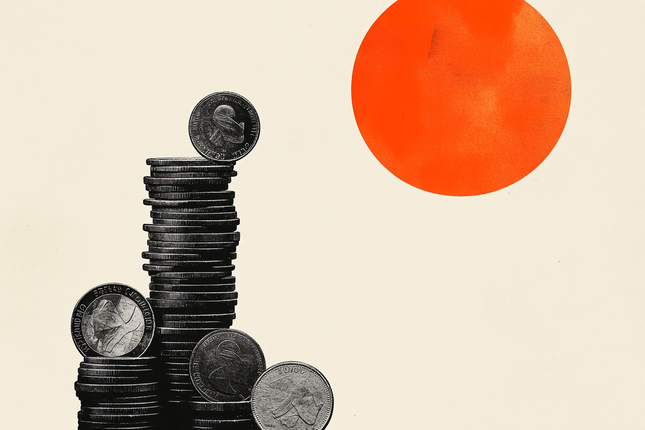AUD/USD Exchange rate
Editors’ Picks

EUR/USD Price Annual Forecast: Growth to displace central banks from the limelight in 2026 Premium
What a year! Donald Trump’s return to the United States (US) Presidency was no doubt what led financial markets throughout 2025. His not-always-unexpected or surprising decisions shaped investors’ sentiment, or better said, unprecedented uncertainty.

US Dollar Price Annual Forecast: 2026 set to be a year of transition, not capitulation Premium
The US Dollar (USD) enters the new year at a crossroads. After several years of sustained strength driven by US growth outperformance, aggressive Federal Reserve (Fed) tightening, and recurrent episodes of global risk aversion, the conditions that underpinned broad-based USD appreciation are beginning to erode, but not collapse.

GBP/USD Price Annual Forecast: Will 2026 be another bullish year for Pound Sterling? Premium
Having wrapped up 2025 on a positive note, the Pound Sterling (GBP) eyes another meaningful and upbeat year against the US Dollar (USD) at the start of 2026.

Gold Price Annual Forecast: 2026 could see new record-highs but a 2025-like rally is unlikely Premium
Gold hit multiple new record highs throughout 2025. Trade-war fears, geopolitical instability and monetary easing in major economies were the main drivers behind Gold’s rally.

Top 10 crypto predictions for 2026: Institutional demand and big banks could lift Bitcoin
Bitcoin’s (BTC) adoption story is unraveling and the king crypto could see institutional demand return in 2026. Crypto asset managers like Grayscale are betting on Bitcoin’s rally to a new all-time high next year, and themes like Bitcoin as a reserve asset are emerging.
Majors
Cryptocurrencies
Signatures
AUD/USD
The AUD/USD currency pair, commonly known as the “Aussie”, represents how many US dollars (the quote currency) are needed to purchase one Australian dollar (the base currency). Alongside with the New Zealand Dollar (NZD) and the Canadian Dollar (CAD), the AUD is considered a commodity currency due to Australia’s significant exports of raw materials such as precious metals, oil and agricultural products.
The Reserve Bank of Australia (RBA) has historically maintained higher interest rates compared to other industrialized nations. Combined with the relatively high liquidity of the AUD, this has made the AUD attractive for carry traders looking for a currency with higher yields.
HISTORIC HIGHS AND LOWS FOR AUD/USD
- All-time records: Max: 1.4875 on February 1974 – Min: 4851 on March 2001
- Last 5 years: Max: 0.8007 on 25/02/2021 – Min: 0.5509 on 19/03/2020
* Data as of December 2024
INFLUENTIAL ASSETS FOR THE AUD/USD
- Currencies: The Japanese Yen (JPY) and the Chinese Yuan (CNY), as Japan and China are the most significant trading partners of Australia. Other relevant currency pairs include: EUR/USD, GBP/USD, USD/JPY, USD/CHF, NZD/USD and USD/CAD.
- Commodities: Gold, Iron Ore and Natural Gas.
- Bonds: GACGB10 (Australia Government 10-year Bond Yield), and T-Note 10Y (10-year United States Treasury note).
INFLUENTIAL ORGANIZATIONS AND PEOPLE FOR THE AUD/USD
- Reserve Bank of Australia (RBA) is Australia's central bank, deriving its functions and powers from the Reserve Bank Act 1959. Its primary duty is to contribute to currency stability, full employment and the economic prosperity and welfare of the Australian people. The RBA achieves this by setting the cash rate to meet a medium-term inflation target of between 2% and 3%, maintaining a strong financial system and efficient payment infrastructure and issuing the nation's banknotes.
- The Federal Reserve (Fed) is the central bank of the United States (US) and it has two main targets: to maintain the unemployment rate at its lowest possible levels and to keep inflation around 2%. The Federal Reserve System's structure is composed of the presidentially appointed Board of Governors and the partially appointed Federal Open Market Committee (FOMC). The FOMC organizes eight scheduled meetings in a year to review economic and financial conditions. It also determines the appropriate stance of monetary policy and assesses the risks to its long-run goals of price stability and sustainable economic growth. The FOMC Minutes, which are released by the Board of Governors of the Federal Reserve weeks after the latest meeting, are a guide to the future US interest-rate policy.
- Michele Bullock is an Australian economist and the current Governor of the Reserve Bank of Australia. She assumed the role in September 2023 and is the first woman to hold the position. She is the Chair of the Reserve Bank Board, Payments System Board and Council of Financial Regulators. Prior to her current role, Bullock was the Deputy Governor of the RBA.
- Jerome Powell took office as chairman of the Board of Governors of the Federal Reserve System in February 2018, for a four-year term ending in February 2022. He was sworn in on May 23, 2022, for a second term as Chairman ending May 15, 2026. Born in Washington D.C., he received a bachelor’s degree in politics from Princeton University in 1975 and earned a law degree from Georgetown University in 1979. Powell served as an assistant secretary and as undersecretary of the Treasury under President George H.W. Bush. He also worked as a lawyer and investment banker in New York City. From 1997 through 2005, Powell was a partner at The Carlyle Group.